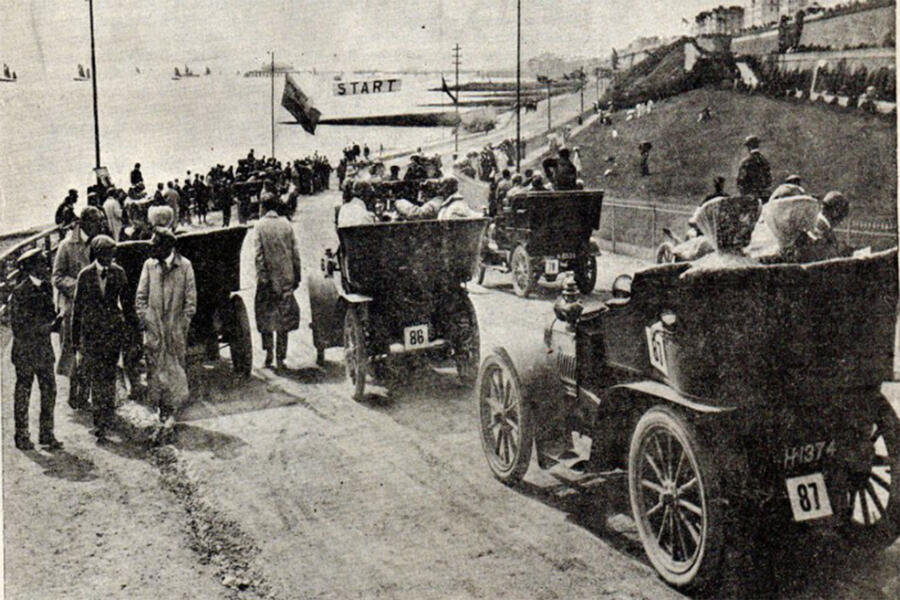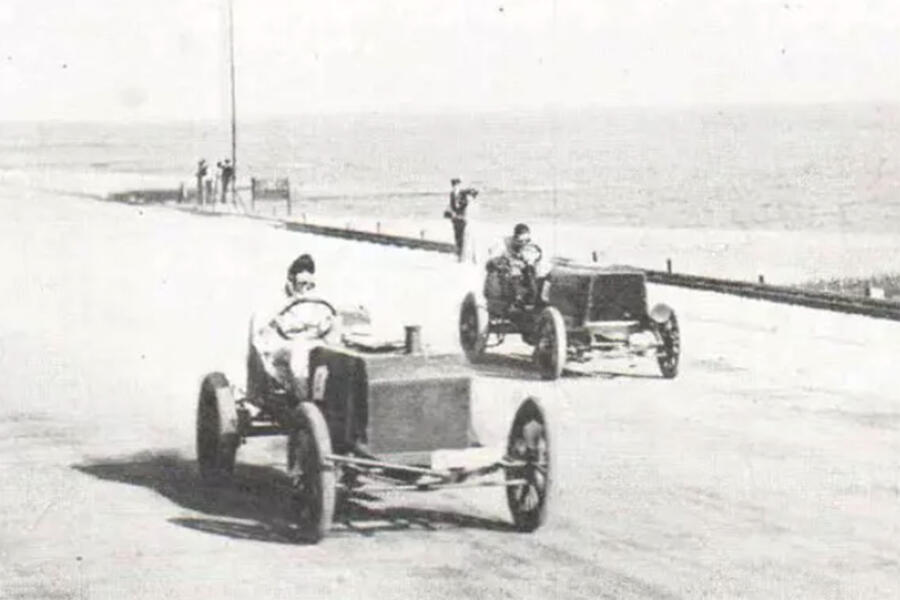On 2 September this year, speed trials will be held beside Brighton beach. They won’t be of any real importance or significance – aside from the fact that this is the world’s longest-running motorsport event.
The metamorphosis of Brighton from a fishing village into a trendy seaside resort occured in the late 1700s, but it fell into decline after a bereft Queen Victoria left the Royal Pavilion in the 1860s.
An ebullient entrepreneur, Harry Preston, was instrumental in its revitalisation, and in 1905 he succeeded (helped by the RAC) in convincing the local council that a ‘motor week’ would further this by attracting massive crowds to see those exciting new machines – cars and motorbikes – race at unprecedented road speeds.
A defensive wall had been built along about 1.5 miles of seafront in 1870, atop which was laid Madeira Road. Being artificial, this was flat and straight, as well as long and wide – very rare in 1905, making it ideal for surfacing with hard, dust-free Tarmac, which had recently been invented, and racing upon.
The long terrace of iron arches between it and the elevated main seafront road additionally would make a perfect viewing platform.

All of this combined for a unprecedently noteworthy and large entry of more than 400 cars. Electrical timing apparatus and a series of telephones allowed the organisers to display cars’ times on blackboards to keep the crowd (supposedly up to 20,000) excited. Wednesday was the first of the four days.
It began in magnificent weather with a race (well, two-car heats leading to a final) of 15bhp Darracqs. Indeed, many cars were shipped from Europe to compete. Then an 8hp Rover beat a Stanley steamer in the sub-£200 race; a Darracq won from 30 cars in the £400-£500 race; and a 28hp Daimler in the £700-£800 race; building to a climax of sub-1000kg racing cars, in which a Napier beat a Mercedes – although the most exciting thing was the immolation of the Dufaux driven by a certain Charles Rolls.













Add your comment